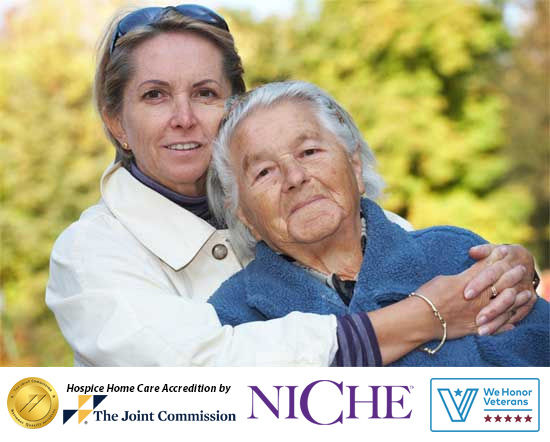 In the living room, a father laughs and reminisces with his children over the silly things they did during childhood. Later, he joins the family to say grace before enjoying a meal together. Moments like these may seem ordinary to most. Would it surprise you to know that this man, Tom, is dying and receiving care from hospice?
In the living room, a father laughs and reminisces with his children over the silly things they did during childhood. Later, he joins the family to say grace before enjoying a meal together. Moments like these may seem ordinary to most. Would it surprise you to know that this man, Tom, is dying and receiving care from hospice?
Many people think that being on hospice means lying in a bed, barely conscious. Tom is a patient who proves that is not the case. Many of his final moments were anything but ordinary, and they would not have been possible without the help of hospice.
Tom’s experience is not unique. The mission of hospice is to provide specialized care for end-of-life patients and their families. More simply, hospice care supports living one’s life to the fullest with dignity regardless of how much time remains.
When Tom was diagnosed with advanced metastatic prostate cancer, the term hospice disturbed him at first. But when TRU arrived on his doorstep, he knew he had a team of caregivers whom he could rely on.
Here are some of the common myths of hospice we’d like to clear up for you:
MYTH: Hospice care means leaving home.
FACT: Hospice services can be provided in a patient’s own home, a nursing home, long-term care facility or a hospice care center.
Hospice is not a place. In fact, hospice services can be provided to a terminally ill patient and his or her family wherever they are most comfortable, or wherever they consider “home.” Tom’s wish was to make sure he was able to stay home for as long as possible at the end of his life. Hospice made it possible for Tom’s wife, Laura, to get the assistance she needed while caring for Tom full time.
MYTH: Hospice means forgoing all medical treatment.
FACT: Hospice nurses and physicians are experts in the latest medications and devices for pain and symptom relief.
In every case, a hospice provider will assess the needs of the patient, deciding which medications and equipment are needed for maximum comfort. For example, Tom’s care team helped him maintain mobility and strength and improve his self-care while he was still at home. Once he was transferred to our inpatient care center, we assessed his medications for maximum comfort.
MYTH: Hospice means strangers care for you.
FACT: Hospice provides a dedicated team of specialists to suit the needs of each patient and educate family members to serve as caregivers.
TRU Community Care strives to educate family members to serve as the primary caregivers for an end-of-life patient. In addition, Tom’s wife Laura said, “I learned to more willingly lean on others, to allow others – hospice staff, family, friends – to assist with Tom’s care – giving him a wider circle to help care for him during his final weeks.”
MYTH: Hospice care ends when someone dies.
FACT: Hospice organizations offer bereavement services for all ages.
Hospice counseling services that deal specifically with grief and coping after the loss of a loved one are available at no cost for up to a year after someone dies. Tom’s wife Laura credits hospice as something that she and her family can always look back and reflect on in a positive way. “TRU’s grief counselor helped me heal immensely during such a difficult time.”
MYTH: People on hospice are in bed, waiting to die.
FACT: Hospice enables special moments and memories at the end of a life that would otherwise not happen.
Tom called hospice because he wanted to live happily and with dignity, restoring a quality of life that he would have otherwise lost to invasive treatments and surgeries. When Tom’s needs were too much to handle at home, he moved to the TRU inpatient care center, where our staff made sure Laura was comfortable, too. They arranged Tom in his bed and made room so she could slip in beside him. Suddenly this man, who had been so strong, was vulnerable. Staff could see that and were responsive to his pain and to the myriad emotions Laura was feeling, too.
To learn more about what TRU Community Care can do for you and your family, call 303.442.0961 or visit trucare.org.
